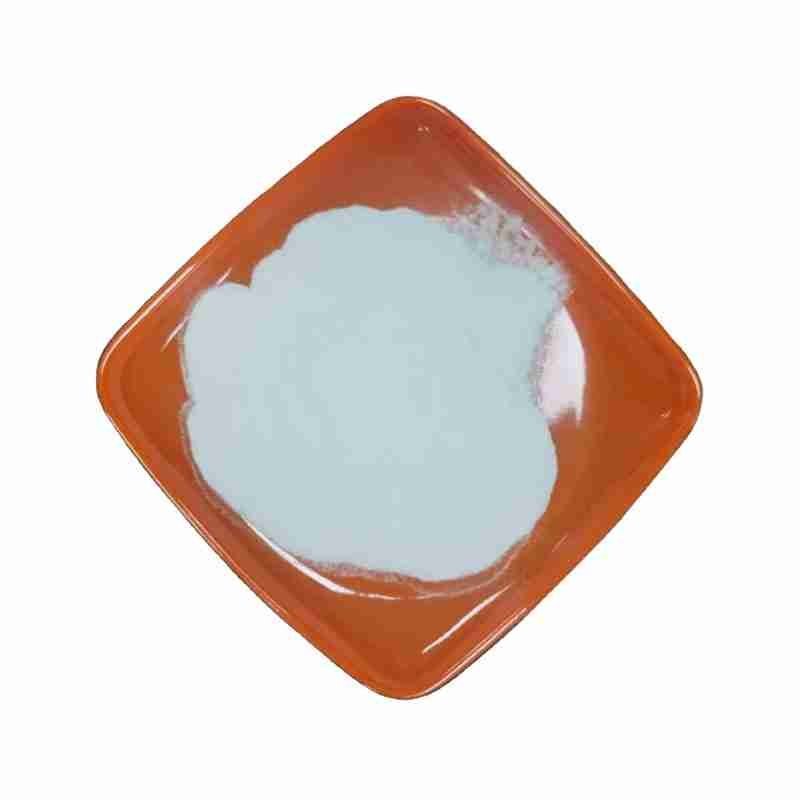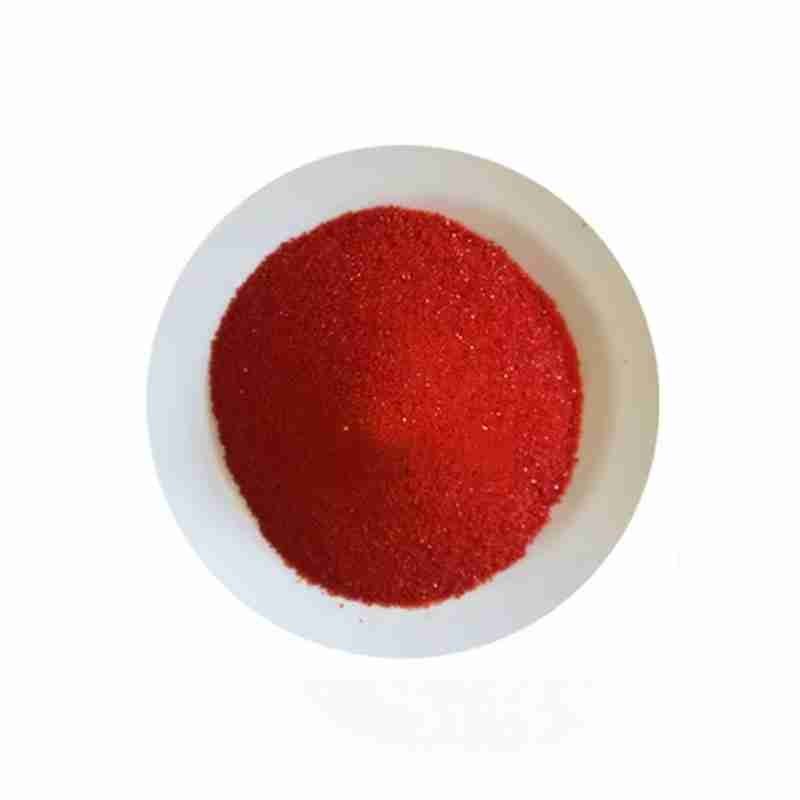Rutile CAS# 1317-80-2
Rutile is one of the major minerals containing titanium. It is tetragonal and often has intact tetra-columnar or needle crystalline-like structure. Its aggregate exhibits granular or compacting blocky shape. It appears as dark, red, maroon, yellow or orange color with iron-rich product appearing as black color; it streaks appears as yellow to light brown color. It has adamantine gloss. Iron rutile exhibits semi-metallic gloss. It is brittle with the hardness being 6 to 6.5 and the density being 4.2~4.3 g/cm3. Products being rich in iron, niobium and tantalum have the density being increased with the high value being up to 5.5 g/cm3 or more. It can be dissolved in hot phosphoric acid. After cooling and dilution, adding sodium peroxide can turn the solution to brown color (titanium reaction). Rutile can be produced in gneiss, pegmatite, eclogite (flash) rock and placer.
发送询盘
Rutile CAS# 1317-80-2
| Rutile Basic information |
| General description?Chemical Properties?Uses?Production method |
| Product Name: | Rutile |
| Synonyms: | r830(mineral);rutile(tio2);sagenite;TiO2(Rutile);tr-700;Titanium(IV) oxide, rutile powder 99.5%;TataniuM oxide;Titania nanotubes |
| CAS: | 1317-80-2 |
| MF: | O2Ti |
| MW: | 79.87 |
| EINECS: | 215-282-2 |
| Product Categories: | nano structured metal oxide;Inorganics;1317-80-2;REALET |
| Mol File: | 1317-80-2.mol |
 |
|
| Rutile Chemical Properties |
| Melting point | 1843 ??C |
| Boiling point | 2900 ??C |
| density | 4.17 g/mL at 25 ??C(lit.) |
| Fp | 2500-3000??C |
| storage temp. | Amber Vial, Refrigerator |
| solubility | Chloroform (Slightly, Sonicated), Hexanes (Slightly, Heated, Sonicated), Methane |
| form | powder |
| color | White |
| Specific Gravity | 4.2 |
| PH | <1 |
| Water Solubility | Soluble in hot concentrated sulfuric acid, in hydrofluoric acid and alkali. Insoluble in water. |
| Merck | 14,9472 |
| Dielectric constant | 6.6??Ambient?? |
| Stability: | Light Sensitive |
| InChIKey | SOQBVABWOPYFQZ-UHFFFAOYSA-N |
| CAS DataBase Reference | 1317-80-2(CAS DataBase Reference) |
| EPA Substance Registry System | Rutile (TiO2) (1317-80-2) |
- 2
- 2-diallylpent-4-en-1-amine
- 4
- 95-16-9
- Ammonium sulfamate
- Benzothiazole
- cas:67889-00-3ح2
- cas:83524-75-8 | pigment black 32
- cas:928836-00-4 | 2
- cas:932745-70-5 | 4
- Chemical Minerals
- Coconut diethanolamide
- Daily Chemicals
- discount
- for sale
- General pvc resin
- hexyl D-glucoside
- in stock
- Lauramidopropyl betaine
- LAURIC ACID MONOETHANOLAMIDE
- Petroleum Additives
- Plasticiser
- Ploymers
- price
- PVC
- quotation
- Raw Materal
- Remove term: Petroleum Additives Petroleum Additive
- SODIUM ETHYL 2-SULFOLAURATE
Related Products
Chemical Name: Ashwagandha Extract
Synonyms: Withania somnifera, ext.; Withania Somnefera Extract
CAS: 90147-43-6
Appearance: Brown
Chemical Name: 1,1,2,2-Tetrachloroethane
Other Name: Tetrachlorethane
CAS No.: 79-34-5
Molecular Formula: C2H2Cl4
Molecular Weight: 167.85
Appearance: Liquid
Carbon black, also known as carbon dark, is a kind of unformed carbon. It??s a light, loose and extremely fine black greasepaint with a veritably large face area ranging from 10 to 3000m2/g. It??s an deficient combustion of carbonaceous substances( coal, natural gas, heavy oil painting, energy oil painting,etc.) under conditions of inadequate air. Or products deduced from thermal corruption. Those made from natural gas are called?? gas dark??, those made from oil painting are called?? beacon black??, and those made from acetylene are called?? acetylene black??. In addition, there are?? trough black?? and?? furnace black??.
Chemical Name: Arabic gum
CAS No.: 9000-01-5
Appearance: powder
Chemical Name: o-Xylene
Synonyms: 1,2-Dimethylbenzene; ortho-xylene
CAS No.: 95-47-6
Molecular Formula: C8H10
Molecular Weight: 106.17
Water glass is an aqueous solution of silicate, which is as crystal clear as glass but as fluid as water. It is a soluble alkali metal silicate material composed of a combination of alkali metal oxides and silica.
Water glass plays an important role in industry, agriculture, technology and other fields. As a binder, water glass has occupied a place in the industrial field since its inception. It can be used to block the sewage leaked from the Fukushima nuclear power plant, or to repair cracks in brick walls; it also has anti-corrosion and acid resistance properties. , is an important material for acid-resistant floors and acid-resistant pools in industrial buildings; painting concrete pavements with water glass can also increase the frost resistance and water resistance of the pavement.
Chemical Name: Quercetin-3-O-sophoroside
CAS No.: 18609-17-1
Molecular Formula: C27H30O17
Molecular Weight: 626.52
Chemical Name: Ammonium Iron(II) Sulfate
Synonyms: Diammonium iron bis(sulphate); iron (ii) ammonium sulfate
CAS No.: 10045-89-3
Molecular Formula: FeH5NO4S
Molecular Weight: 170.95
Aluminum chlorohydrate is an inorganic compound often used as a coagulant in water treatment processes. It is also known for its astringent properties and is utilized in various personal care products, such as antiperspirants and deodorants, due to its ability to temporarily close sweat glands. It enhances the viscosity and stability of formulations, making it a valuable ingredient in cosmetics and pharmaceuticals.
Ammonium sulfamate is a white crystalline compound with the chemical formula (NH4)2SO3. It is a versatile chemical used in various applications, including as a flame retardant, a fertilizer ingredient, and a chemical intermediate. In the agricultural sector, it serves as a source of nitrogen, promoting plant growth. As a flame retardant, it is effective in reducing the flammability of materials. Additionally, it is used in the synthesis of other chemicals due to its reactivity with amines and other organic compounds. Its properties make it a valuable component in a range of industrial processes.
Product name:HYDROXYPROPYL GUAR HYDROXYPROPYLTRIMONIUM CHLORIDE
Purity:99%
Appearance:Light Yellow Powder
Package:Customized according to customer needs.
Sample:Available
Sodium aluminosilicate (CAS No.73987-94-7) is an inorganic compound.
It has a certain application in industry. For example, in the ceramic industry, sodium aluminosilicate can be used as a flux and an ingredient in ceramic glazes, helping to improve the performance and appearance of ceramics.
In some chemical processes, it may also function as a precipitating agent or an additive.
In the field of materials science, the properties and structural characteristics of sodium aluminosilicate make it have potential application value in the research and development of some new materials.


















